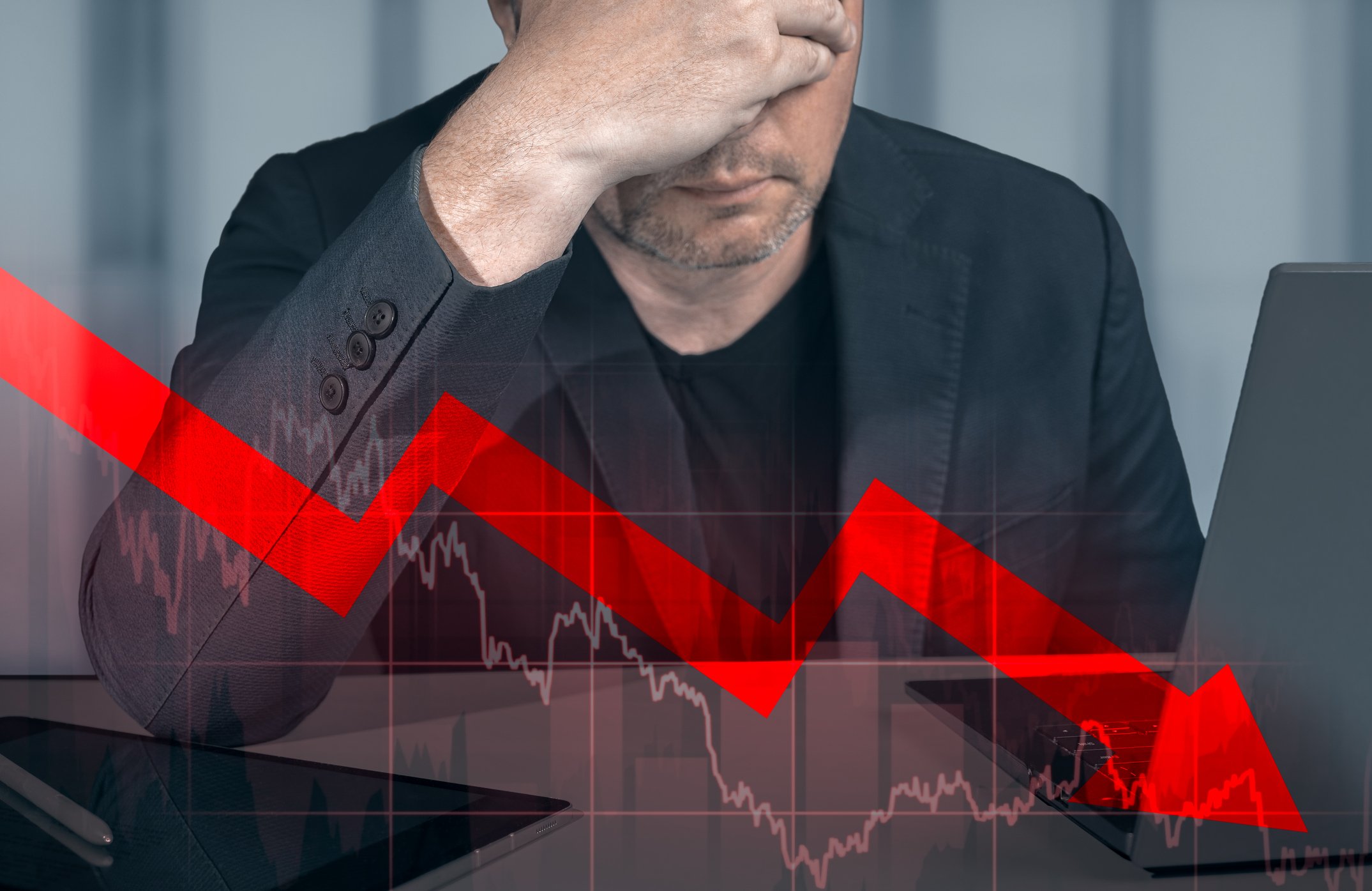Several issues were put to a vote in Ohio this week, two of which were relevant to the decision on whether or not recreational and medical marijuana would be legalized in the state. Although polls prior to the election sided with one view, the voters voiced their opinions in the exact opposite position. Will 2016 be the year marijuana is legalized in Ohio? What other states should industry watchers be keeping an eye on?
Meanwhile Gilead Sciences (GILD +0.36%) is back on our list as their continued success with hepatitis C drugs repeatedly knocks down the competition. On this Industry Focus episode we'll give you some insight on who else you should keep an eye on in this sector that could very well give Gilead a run for their money.
A full transcript follows the video.
Kristine Harjes: Big changes ahead in 2016? This is Industry Focus.
Hey, everyone! This is Kristine Harjes, your host of Industry Focus, healthcare edition. I am pleased to welcome back via Skype, Todd Campbell, our regular contributor. How are you doing, Todd?
Todd Campbell: I'm glad to be back. I had a nice little visit down in Florida, and Florida is nice and all, but there's nothing to beat fall in New England.
Harjes: Yeah. I'm sure it's absolutely beautiful.
Campbell: The colors were spectacular.
Harjes: I bet. We're very happy to have you back.
Campbell: Thank you.
Harjes: So, today we are starting to look at the New Year, now that it's November and thinking about some big trends that we might see in 2016. We have two in particular. One of them is super timely; we wanted to talk about one of the elections that happened just last night. Particularly as they relate to the legalization of marijuana and maybe project a little bit for 2016 what we might expect to see there.
After that we're going to turn to the hepatitis C market and do a dive into a couple of the different key players in the market and see what's up for the next year and beyond that, too. If this going to be a big trend in healthcare -- which I definitely think it will be -- then who stands to be a big winner? Let's dive right in. Todd, do you want to do a quick recap of what happened last night in the voting booths?
Campbell: Sure. I think one of the most intriguing things from anyone who's either a proponent or an opponent of the legalization of marijuana, was watching very closely what happened in Ohio. There was a lot of stuff going on in the background over the last couple of weeks leading up to the Ohio election, which basically had a measure on its ballot saying they want to legalize both recreational and medical marijuana.
Harjes: This is the first time that we've seen both in one vote.
Campbell: Yeah. If it had gone through -- and it didn't -- then it would have been the first time that recreational would have come along at the same time, or before medical in that state. But it didn't. It didn't happen. The vote was a resounding "no". They weren't going to do it. I think that makes a lot of people who are hoping for changes to legislation, especially in Ohio, look at the headline and go "What does this mean for Ohio? What does this mean for potential items to be on the ballot next year in a lot of other states?"
Harjes: I think one of the reasons that people might have been puzzled about that headline of "Ohio Turning down Marijuana", people would be surprised because prior surveys show Ohio citizens supporting legalization overwhelmingly when you put it just to medical use. There's a big caveat though.
Campbell: Yeah. The caveat was that this was not your average marijuana legislation. What they did is had a bunch of farmers who got together and said they wanted to see if they could get approval for growing marijuana on their land. There were 10 parcels in particular that they were looking to get approval to grow marijuana on. People looked at that and asked why they were trying to limit the production to these 10 parcels, and pointed out how that was a monopoly.
It's really not; it's an oligopoly, but that's another story. Regardless, people in America don't care for monopolies because they think that's going to disadvantage the consumer; and rightly so. You have the opponents of this legislature coming out and saying this isn't the best way to do this and it doesn't make a lot of sense. They said "Why don't we turn it down and go back to square one?" They were convincing enough to enough people in the state to get the majority to vote against it. It was issue number 3 on the ballot.
They also had enough support to put issue number 2 on the ballot, which basically said you can't change the constitution in any way that will allow for a monopoly to be created so if issue 3 had passed it would have directly gone against issue number 2. It was very convoluted.
Harjes: You can see by their reaction to issue 2 where 1.55 million people said they do want the issue to pass and 1.45 said no. So it was a complex issue, but it was essentially intended to create a barrier to the creation of monopolies, or special tax conditions by requiring citizens to vote and actively waive the rules before voting on an issue itself that might create one of these situations. You can see by the reaction to that where people said they wanted this barrier in place that it implies this monopoly, or oligopoly situation is why issue 3 about marijuana was turned down.
Campbell: Right. Overwhelmingly, people want to have more control over the production of marijuana; the sale and distribution of marijuana. They don't want to limit it in a few hands like the tobacco industry did. They want to have it as diversified and as locally grown and distributed as they possibly can. This seemed to fly in the face of that and that's why a lot of the national organizations that support, or are advocating for changes in marijuana laws are distancing themselves from issue 3 and saying it should not be considered to be the blueprint for what will be seen on the ballots in other states in 2016.
This is a very unique situation. The story probably isn't over in Ohio. There will probably be other legislation that will get put forward and as long as it doesn't run afoul of issue number 2, that could pass. Like you said; polls overwhelming showed -- at least in terms of medical marijuana -- that people in Ohio support changing the law.
Harjes: This will definitely be a state to keep an eye on in the 2016 elections. Another state that's been in the marijuana spotlight is Colorado. They had another vote yesterday that was proposition BB, and it passed by a landslide.
Campbell: Yeah. Colorado is a very unique situation. It's what everyone else is holding up to and looking at, saying "Can you legalize recreational marijuana and be able to tax it and have it be an effective system?" Can you regulate it, tax it, and have it work? I would argue that so far, so good; at least in the state of Colorado. You've got a state that, last year, generated a significant amount of tax revenue, about 70% more than it did the year before.
It's on pace to grow that tax revenue even more as we move into the new fiscal year, which began in July. That money is being used and handed back to school systems, etcetera. I think Colorado will continue to be looked at and watched, and a lot of people will probably be focusing back on that as they try and convince voters in states like Massachusetts and California, and Arizona to pass legal marijuana in 2016.
Harjes: There are certainly more question marks around the Colorado situation, which is why so many people are watching it. This whole "Proposition BB Vote" was really not a surprise at all. The question that was posed to the voters was "Should we take the tax revenue that we've collected from marijuana this past year and put it to school programs and drug education, or should it go back as a tax refund, go to growers and users?"
This really isn't surprising at all that the vote went for the school programs because Colorado's citizens already voted on an almost identical measure in 2013. The only reason they had to do this revote to begin with was because Colorado brought in more overall revenue than initially projected for the year, which triggered this weird rule that basically said "You need to revote now that there's now more money at play."
Campbell: Right. The projections were off, and as a result -- in order to keep up with the meaning of the law when it was originally passed -- it just made sense to go ahead and give it the O.K.
Harjes: Todd, before we close off the subject of marijuana are there any other states we should keep an eye on in the 2016 elections?
Campbell: California's the biggest. As goes California, the nation will probably end up following over time. California; continue to watch that very closely. Also watching Massachusetts very closely too because Gallup has done a bunch of studies evaluating how people feel about the marijuana subject, whether or not they will vote for it.
What they've found is that typically speaking, people who are younger tend to vote in favor of reforming the laws of marijuana. Also, states that might have more bias toward democrats rather than republicans tend to vote in favor of marijuana legislation as well. Obviously, California and Massachusetts will be two areas that are highly populated and could have the best chances of getting marijuana laws passed next year.
Harjes: It surely will be interesting. Before we pivot over to the hepatitis C portion of our show, which will definitely be very stock heavy, I just want to remind everybody that as always, people on the program could have interest in the stocks that they talk about. The Motley Fool could have formal recommendations for or against; don't buy or sell solely based on what you hear. Do your own research. Consider this a launch pad for getting a great investing idea and then digging your teeth into it even further.
Hepatitis C has certainly been in the news a ton during 2015, and I think it's poised to be a big issue in 2016 as well. There are a handful of different companies that are working on improving treatment for hepatitis C and in most recent news AbbVie (ABBV 1.81%), which makes a drug called Viekira Pak, and another one called Technivie, received news from the FDA that there was a safety alert going out that the FDA had received reports of liver failure and complications in patients taking these drugs that had already had scarring of the liver.
In reaction to this, AbbVie has said that a causal relationship between the treatments and the adverse effects hadn't actually been established, but the drugs couldn't be ruled out as a cause. Another result was that the label for the drugs is being updated to warrant against use in patients with more advanced liver scarring. This is 3%-5% of hepatitis C patients, just for context. I think people saw that news and they said "AbbVie is not going to be a big player in hepatitis C anymore."
If they're potentially going to lose market share because of this, who do you think stands to be the big winner here? This is a no brainer, for me at least, if you've listened to our show before. Todd?
Campbell: Gilead Sciences.
Harjes: Woo!
Campbell: Not very surprising for long time listeners, that's for sure. The news coming out of that -- AbbVie tried to downplay this on their earnings conference call and I urge people to always dig into the transcripts of the conference calls, especially with top selling, multi-billion dollar drugs to make sure there's nothing they could be aware that could shift the way market share looks. Certainly, as we go into 2016 a lot could theoretically happen that's going to shift shares around in hepatitis C.
AbbVie is one part of that, but it's an important part of it because as we came into 2015, the big question on everyone's mind was "How much market share can Viekera Pak steal away from Gilead Sciences' top selling drugs Sovaldi -- which launched in December of '13 -- and Harvoni, which launched in October of '14. Those drugs have been massively successful. They're high priced drugs, but they work very, very well, and as a result they've been used to treat 100s of thousands of patients and they've generated out billions of dollars in revenue for Gilead Sciences.
Viekera Pak, over the first nine months of this year -- it won approval and launched in January -- have not reached the run rate that AbbVie had hoped and guided for coming out of 2014. AbbVie had hoped to see that drug putting up a run rate of about $3 billion per year. We're not quite there. In the third quarter it was about $469 million. You look at that and wonder why that's happening. It could be that there was some early insight into this problem with livers as doctors were discussing with one another.
This revelation and addition to the label is not a deal breaker for Viekera Pak because it's still very successful in patients that don't suffer from liver disease already, but it certainly could mean fewer people are treated with it, especially since Sovaldi and Harvoni work so well. To some extent, the sales impact on AbbVie in 2016 may be offset by a recent approval in Japan, which is a major market for hepatitis C treatment.
I'm not willing to go out and say yet that the year over year sales will decline for Viekera Pak in 2016 because of this, because Japan should offset some of that downside risk, but it's definitely something to keep an eye on. I think most people should be reevaluating their models on what they think Viekera Pak could do in the next 12 months.
Harjes: When you look at Gilead you compare the numbers of Harvoni and Sovaldi and they combine for $4.8 billion in sales during the third quarter. Todd quoted that Viekera Pak generated a revenue of $469 million in the third quarter. Half a billion dollars is not nothing, but it really pales in comparison to Gilead's numbers.
Gilead is claiming a 90% market share of hepatitis C patients. Clearly they're currently the dominating player, but is there anyone else other than AbbVie that's competing in this space and could stand to take down Gilead's dominance here?
Campbell: There are a couple. Bristol-Myers (BMY 0.07%) has a couple drugs that are currently on the market. However, most of those sales -- again, we should downplay a $1 billion run rate -- but Bristol-Myers' drugs in third quarter for hepatitis C brought in about $400 million, down from $460 million the year before because a lot of their sales in that space are coming out of Japan. In the past year Gilead Sciences has won approval in Japan and now AbbVie is winning approval in Japan.
So I think Bristol-Myers is going to become more of a vintage drug in this space, offering and selling more drugs in the niche category. I think the much bigger threat could come from Merck (MRK 0.41%) next year. People should be watching Merck very closely in January of next year because that's when the FDA is set to make a decision on approving its hepatitis C drugs and in trials those drugs, in my opinion, matched up best to what Gilead's Harvoni delivered in its own trials. Obviously, we know that Harvoni has been a massive success so it will be very interesting to see how that plays out.
Harjes: Especially because the drugs are kind of similar in efficacy and they're both one pill per day. to me the only advantage, or distinguishing factor that I could see here between the offerings from Gilead and from Merck is that Harvoni can be dosed over eight weeks in more than 40% of genome type I patients, which is the biggest percentage of patients with hepatitis C, and Merck's drug is always going to be 12 weeks.
If you reduce duration that's going to improve adherence, which is going to make your real life efficacy better. I could see that being an advantage going to Gilead. Maybe if it ends up going the other way it could be a pricing issue?
Campbell: Yeah. Merck's conference call was pretty firm in saying they're not going to fight on price for market share. That will be interesting to see how that plays out, too. Viekera Pak could be the one that stumbles.
Harjes: Yeah. One other thing I'll point out: Merck doesn't have any other hepatitis C drugs, all the way back until phase I. To me, it doesn't look like they have this huge lineup of drug after innovative drug, to win away market share. Whereas, you look at Gilead Sciences and they're already developing their own next generation hepatitis C therapy. To me, this really looks like somebody who is continuing to innovate and continuing to try and get better and better drugs.
The next hepatitis C therapy that they just submitted to the FDA for approval on October 28th is a pan genotype drug, which could theoretically eliminate the need for genotype testing to distinguish if you have genotype I, or which particularly variety of the disease you have. I could see this being particularly helpful in emerging markets if they don't have the same healthcare infrastructure that we have here.
To eliminate the need for genotype testing could make this drug more accessible and the data looks pretty good. In phase III it posted a 90% durable response after 12 weeks, and this was a trial across genotypes I-VI.
Campbell: Yeah, this may allow them to sidestep any threat from Merck as well. There's no question in my mind that Gilead Sciences is going to be the dominant player again in 2016 in syndication. Merck may pass AbbVie. Then in 2017, if you really want to look forward, it might get more interesting again because that's when AbbVie's next generation cocktail could hit the market.
That's also when other therapies from Johnson & Johnson may start to make its way toward the FDA as well. We shouldn't discount Johnson & Johnson. They're just a little further back in their research. They've got some ongoing phase II stuff under way, which looks really intriguing and could help them in creating a shorter duration therapy for HCV. This is going to be a very interesting space to watch over the course of the next two years, still.
Harjes: As long term investors that's what we want to be looking at. Not just who the current market share winner is, but looking ahead at the pipelines and figuring out who will continue to win this space. I think one last piece of the puzzle that is worth touching on is the fact that you have a hepatitis C treatment. That means you're cured.
So are these drugs eliminating their own market? Do you think that this isn't going to be a huge space for drug makers in a couple of years because we've already treated everyone?
Campbell: Even if you look at it and say Gilead is going to treat 350,000 people a year. Maybe the other ones would get up to 500,000 people per year, the U.S. market should be able to handle that kind of pace until at least 2020, maybe 2021. Japan should be able to -- that market's still probably addressable into 2023, 2024. I'd say Europe goes even further than that because they've got 900 million people who are suffering from this disease.
Then there's the emerging market population which some people estimate as high as 170 million people. So, yes; eventually the goal would be to have no one having hepatitis C because of these drugs. Does that mean this market disappears in the next two years? No. Five years? It starts to get a bit murky in some places, but I would say that you're still generating a lot of money that is a multi-billion dollar blockbuster indication for at least 10 years.
Harjes: I would agree with you there. there's so many people that are estimated to have this disease and I think once the drugs are more prevalent, especially in developing areas, you're going to get a woodwork effect where even more people go and get tested and figure out that they have the disease. The hope there is that we have the best of the best drugs to treat them with. Todd, thank you so much for weighing in here.
Be sure to keep your eyes out, folks, for any more changes in this space. This and marijuana are clearly going to be two huge issues in 2016. Hold tight, keep listening to all your Industry Focus episodes and check back to Fool.com for more information. Thanks for listening.









